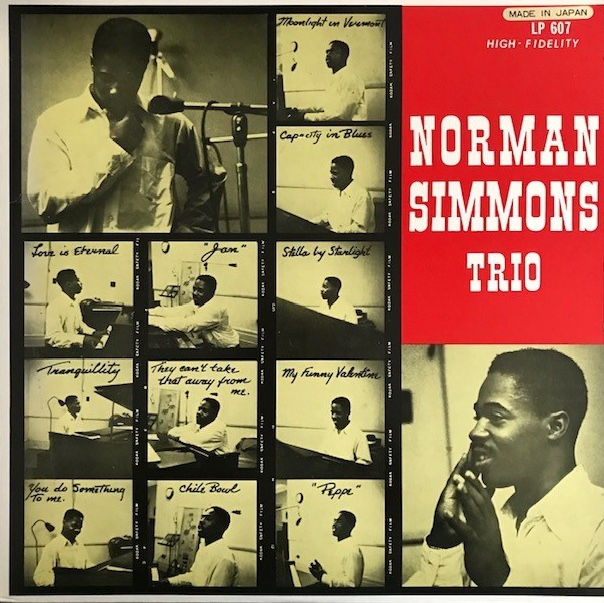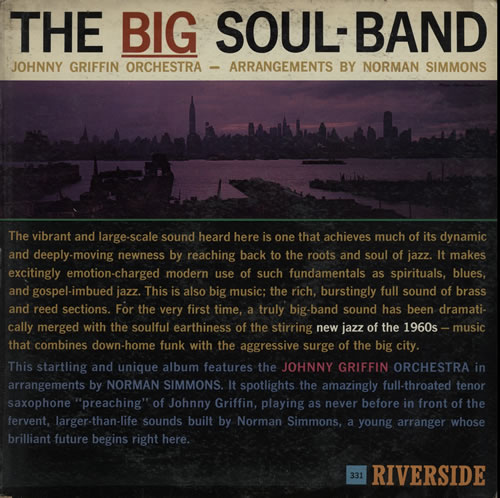Prime accompanist goes solo.

Personnel
Norman Simmons (piano), Victor Sproles (bass), Vernel Fornier (drums)
Recorded
in 1956 in Chicago
Released
as Argo 607 in 1956
Track listing
Side A: Capacity In Blues/Stella By Starlight/Jan/My Funny Valentine/Peppe
Side B: Chili Bowl/Moonlight In Vermont/You Do Something To Me/Love Is Eternal/They Can’t Take That Away From Me/Tranquility
In the early stage of his career, Simmons worked at the Beehive in Chicago as house pianist, backing Prez and Bird, no less. There’s no better education than the bandstand. Truism all too forgotten these days. Simmons honed his chops and perfected the feel of his trio, which most of the time consisted of bassist Victor Sproles and New Orleans-born and bred drummer Vernel Fournier, best-known through his association with pianist Ahmad Jamal.
So when it was time to hit the studio, they were ready for a mixture of standards and originals, perceived in their own refreshing image. One has to hear for itself how attuned to each other’s ears a good piano trio can (should) be and one can do without a weathered track-by-track analysis. Worth to point out, however, are their original takes on Stella By Starlight and My Funny Valentine, both rhythmically inventive and suspenseful. Not to mention the uplifting rhumba vibe of Simmons’s Jan and the nuanced interplay of Chili Bowl, which is usually credited to Duke Ellington.
Simmons is anti-flash, a pianist that cares about the value of balance and thoughtful phrasing, perhaps the result of his various enterprises in accompaniment. He plays like a respected baker kneading dough and carrying on all the right steps to the end product, experienced means to a tasteful end.
Simmons recorded two handfuls of records during his lifetime, which took him two years shy of a half century. (Two of those feature tenor saxophonist Eric Alexander in the 00’s, who’s always been keen on working with unsung heroes) His debut Trio wasn’t followed up until the release of 1976’s Ramira The Dancer. Much better title, quite intriguing, no doubt inspired by a lady whose steps equaled the versatile beat-ness of Simmons.
Norman Simmons passed away at the venerable age of 92 in 2021.
Listen to Norman Simmons Trio on YouTube here: https://www.youtube.com/watch?v=MDPcfTZJIqY





